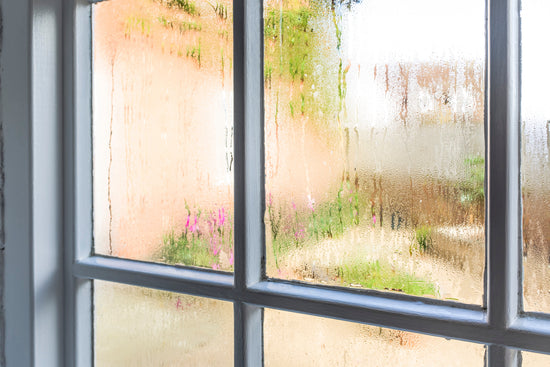There’s no doubt that paying for home repairs can be costly.
Luckily, a lot of home repairs might seem daunting but are actually quite simple to manage – and you can save a lot of money by doing them yourself!
To help you get started, we’ve rounded up some 6 DIY home repair projects that you can easily tackle on your own.
DIY Home Repair #1: Fix a Leaky Kitchen or Bathroom Pipe
Having a leaky kitchen or bathroom pipe can be a huge pain – and it can also be a huge waste of water.
While it might not seem significant, a leak of just 10 drops per minute can waste almost 300 gallons in a year!
Your first instinct might be to call a plumber, but leaky pipes are actually quite easy to fix on your own.
It could be as simple as tightening a slip-nut near the P-Trap (the piece of plumbing under your kitchen or bathroom sink). Or if there’s a hole in the drainpipe, you can install a flexible coupling with stainless steel clamps.
Neither job requires hiring a plumber!

For repair details specific to your faucet, check out Denver Water’s step-by-step guide on how to repair a leaky faucet.
It covers all kinds of faucets, from compression faucets to two-handle washerless faucets, and single-handle washerless faucets.
Most faucet repairs only require a wrench or, in some cases, an inexpensive replacement piece from your local hardware store.
Keep in mind that if the leak is inside a wall, it’s best to call a plumber to check it out. This type of fix requires more advanced expertise.
DIY Home Repair #2: Secure Loose Floorboards
If you live in an older home, it’s pretty common for floorboards to flex and become loose over time – luckily, this is another easy fix!
All you have to do is get the nails that fix the floorboards to the joists back in place. You can do this by using a nail set to drive them deeper.
If you find that the floorboards are too tight to get back in place, moistening the wood can make them easier to nail down.

If your floorboards are bowed (or bending away from the floor), try using stainless steel screws instead of nails and cover the heads with a wood filler.
Important: Before you start fixing your floorboards, make sure to check that there are no electrical cables or pipes directly underneath the floorboards.
If you’re unsure or don’t feel comfortable proceeding without an expert’s opinion, it’s best to call in a professional.
DIY Home Repair #3: Defrost a Frozen Pipe
With the colder months approaching, it’s important to remember that under certain circumstances, pipes can freeze. And if they’re left unchecked, or unnoticed, they can quickly burst and flood areas of your home.
Not only is this a major annoyance, but it can also be an expensive repair.
According to the Insurance Institute for Business and Home Safety, a burst pipe can cost upwards of $5,000 in water damage.
The good news is that if you catch the frozen pipes early, you can minimize the damage and even prevent them from bursting altogether.
To get the full run-down on defrosting your pipes, we wrote a guide on what to do if your pipe freezes.

But in short, the moment you notice a frozen pipe in your home, you can minimize the damage by turning off the main stopcock and covering the area with plastic sheets in case there are any leaks.
You’ll then want to inspect the pipe for any signs of splitting. If there aren’t any signs, simply open the tap closest to the frozen section and use a blow dryer to defrost the pipe.
If you live in a colder climate that’s prone to sub-zero temperatures, we definitely recommend installing a Notion sensor that can detect a water leak as soon as it happens.
Your phone will receive a notification as soon as Notion detects flooding or leaking in your home, so you can quickly call in a plumber to deal with the problem!
This could save you thousands of dollars in-home repairs.
DIY Home Repair #4: Paint the Exterior of Your Home
Painting the exterior of your home can be a big project, but this DIY project is definitely worth the time and effort!
Before you get started, you’ll need to make sure that any dirt or dust buildup is removed. This can be done with a pressure washer.
You’ll also want to repair any damaged surfaces such as cracks or holes. Start by inspecting the exterior of the house and taking note of any damaged wood, siding, metal, or stucco. You can fill these easily with epoxy filler and a spackle knife.

Next, you’ll need to remove any loose or chipped paint with a paint scraper or medium-grit scraping block.
Finally, on to the painting! Working your way from the top to the bottom, apply two coats of eggshell or flat exterior paint to the entire house.
You’ll then want to paint any trimmings or door frames with two coats of exterior semigloss paint color.
If you want to learn some painting techniques, Lowe’s has a tutorial on how to paint a house.
DIY Home Repair #5: Fix a Running Toilet
The sound of a running toilet isn’t just annoying – it means you’re leaking water and racking up your monthly utility bill.
The good news is that fixing a running toilet can be quite simple with the right pieces (such as this complete toilet repair kit from Home Depot) and a few simple tools.
To start, try to pin-point the exact issue by identifying what isn’t working.

For example, if the water is running constantly, the issue is probably a faulty toilet fill valve. If the water is running intermittently or you hear a dripping sound, the issue is most likely a worn-out or ill-fitting toilet flapper.
If you’re unable to identify the main source of the problem, it’s best to purchase a complete repair kit. It should come with specific instructions and easy-to-follow steps.
To take extra precautions and avoid any water damage caused by your leaking toilet, it’s best to install a Notion Sensor. That way, you’ll be informed the moment it detects any water leaking from your toilet.
DIY Home Repair #6: Patching Drywall
Patching nail holes and small cracks in your walls is one of the easiest DIY home repair projects!
All you need is spackling paste and a spackle knife – simply apply an even layer to any holes or cracks you find, and then scrape away any excess paste once you’re finished.
It might be tempting to start sanding right away, but you need to let the paste dry for 24 hours!

Once it’s dry, sand it down until the surface is flat and smooth. Finally, give it a quick wipe to remove any dust before painting.
For larger holes, you’ll need to buy a larger patch. Home Depot has a wall repair patch kit that repairs holes up to 4 inches in diameter.
That’s a wrap! We hope that you learned a few new DIY home repair projects that you can tackle on your own!





